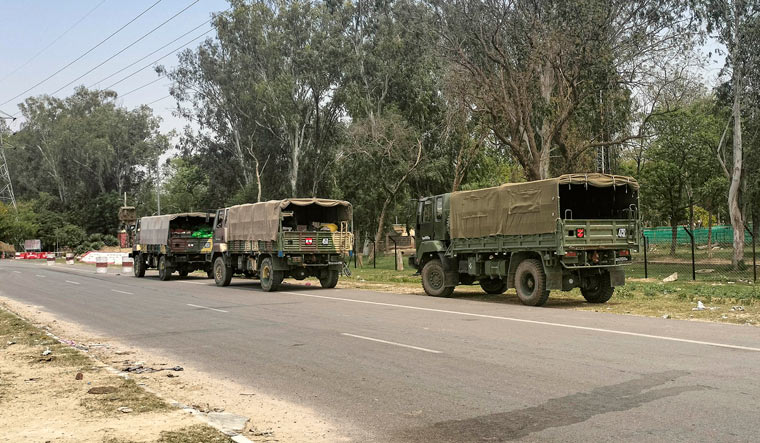From the beginning, clearly, a lot of things were not adding up in the April 12 shootout case in the sprawling Bathinda military base. While the Punjab Police’s FIR about “two white-kurta-clad” and “masked” persons alluded to a terror angle, many suspected it to be an insider job with fratricidal motives.
The possibility that the assailant could have been at large inside the cantonment for several days after the killings, coupled with the Army establishment’s tight-lipped posture added more layers to the murder mystery.
Moreover, 12 hours after four sleeping soldiers were gunned down, the incident of another armed soldier on sentry duty found dead with a bullet injury on his head, added another layer to the shootout although authorities claimed the two incidents to be unrelated.
But the mystery was not to abide for long with the Punjab Police announcing a closure on Monday noon.
Meanwhile, a statement by the Indian Army’s South Western Command on Monday said an individual, a gunner named Desai Mohan, had confessed to his involvement in stealing of an INSAS rifle and killing four of his colleagues and that it was apparently due to “personal reasons/animosity”.
“On 12 April 2023 at around 0430 hours, while he (Mohan) was on sentry duty, he recovered the weapon from its hiding place, moved to the first floor, and killed all four personnel while they were asleep.”
“The statement made by the individual while filing the initial FIR on 12 April, mentioning two persons in civil dress with INSAS rifle and axe was an attempt to divert attention of investigating agencies,” the Army statement added.
Without doubt, the Bathinda incident will dominate proceedings at the Army Commanders’ Conference (ACC) that has begun from Monday.
Held twice a year, the Indian Army’s ACC undertakes a 360 degree look at the current emerging perspectives on issues relating to operations, logistics, administration, human resources and welfare.
With the Bathinda case having profound implications on human resources management, there is bound to deliberations on the incident as well as on the larger issue of the Army Act 1950 having no specific provision to try cases of sexual crimes, misconduct and harassment.
This lacuna will be glaring in the backdrop of a growing number of women joining the armed forces.



